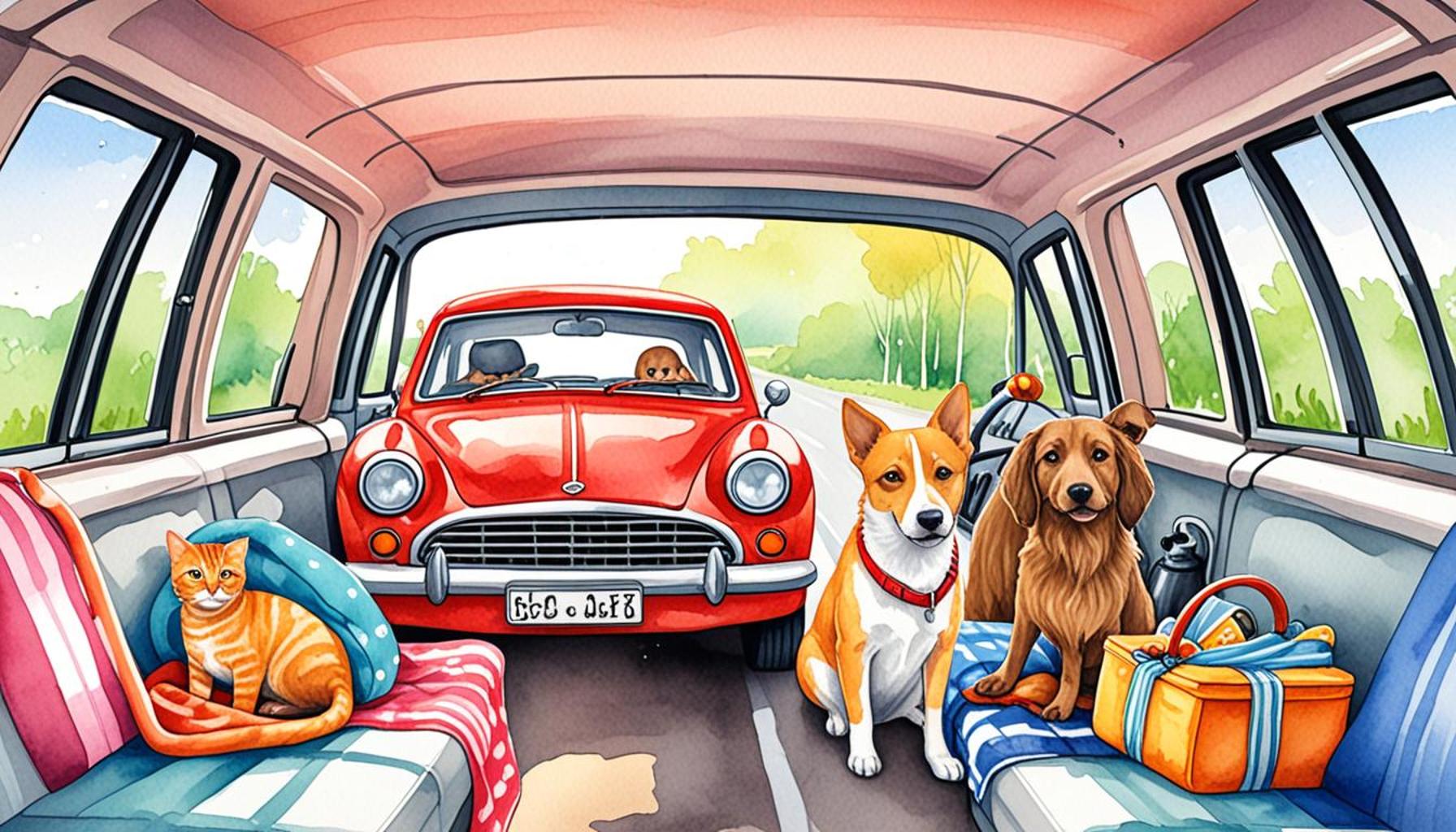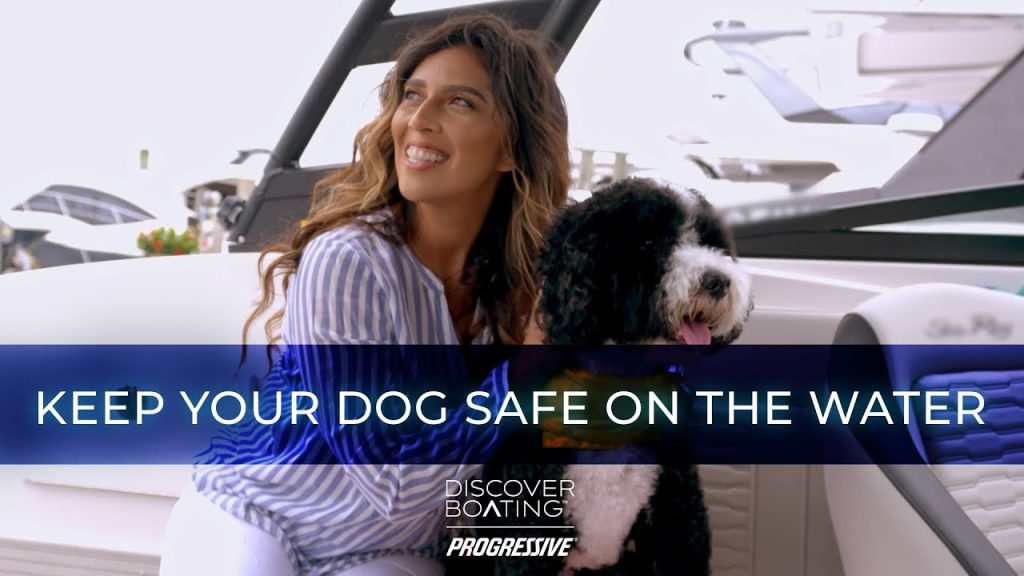Essential Pet Care Tips for Long Car Trips Keep Your Pet Safe

Importance of Pet Safety During Travel
Long car trips can be exciting adventures, but they can also pose challenges for pet owners. Ensuring your furry friend’s safety during travel requires careful planning and preparation. From choosing the right gear to understanding their needs on the road, there are numerous considerations to keep in mind. Failure to address these aspects can lead to stress for both pet and owner, not to mention increased risks on the road.
Plan Ahead for Safe Breaks
One of the most important tips for traveling with pets is to plan ahead. Scheduling breaks every few hours can help prevent discomfort and anxiety in your pet. Aim to stop every two to three hours to allow your furry friend to stretch their legs, hydrate, and relieve themselves. Consider using apps or websites that highlight pet-friendly rest areas, so you can choose locations that accommodate your pet’s needs.
In addition to rest stops, it’s beneficial to scout out pet-friendly accommodations if you’re planning to stay overnight. Many hotels and motels in the United States welcome pets, providing specific amenities like dog parks or pet-sitting services, enhancing your travel experience.
Secure Your Pet for Safety
Safety in the vehicle is paramount. Use a pet seatbelt or a secured crate to prevent distractions while driving. Just like with children, your pet’s safety can significantly impact your ability to navigate the roads safely. A loose animal in the car can cause distractions that lead to accidents. Look for products specifically designed for pet safety, such as harnesses that attach to your vehicle’s seatbelt system. These can provide a level of security that allows you to focus on driving rather than worrying about your pet’s movements.

Maintain Comfort and Well-being
To maintain your pet’s comfort during the journey, ensure proper ventilation and temperature within the vehicle. This is especially crucial during the summer months or in warmer regions. Never leave your pet alone in a parked car, even for just a few minutes. Temperatures inside a vehicle can rise rapidly, posing a serious health risk to your furry companion.
When traveling, keep familiar items close at hand, such as their favorite blanket or toys. These items can provide comfort and help reduce anxiety. Additionally, bringing plenty of their regular food and water can help prevent digestive issues caused by sudden dietary changes.
Recognizing Stress in Pets
Understanding the unique needs of your pet during car rides is essential, especially on trips that last several hours. Familiarize yourself with the signs of discomfort or stress in your pet. Whining, excessive panting, or refusal to settle down can be indicators that they need a break. Being attuned to these signals can help you make necessary adjustments to improve their travel experience.
Incorporating these practical tips into your travel routine will not only ensure a safe environment for your pet but also enhance your overall journey. By attending to their needs, you create a more enjoyable atmosphere, allowing ample focus on the exciting destination ahead.
CHECK OUT: Click here to explore more
Pre-Trip Preparations: Setting the Stage for Safety
Before embarking on a long car journey with your pet, pre-trip preparations are key to ensuring a smooth and safe experience. Start by scheduling a visit to your veterinarian. This is especially critical if your pet has pre-existing health conditions or if you’re traveling across state lines. A quick health check-up can confirm that your furry friend is fit for travel and can help you obtain any necessary medications, such as anti-nausea treatments or tranquilizers for anxious pets.
Furthermore, updating your pet’s identification is essential. Ensure that your pet’s collar has a secure tag with your current contact information. In addition, consider microchipping your pet if they aren’t already. This provides an additional safety net in case they become lost during your travels. Many animal shelters and veterinarians offer microchipping services, which is worth looking into if you frequently travel with your pet.
Packing for Your Pet
Just like you wouldn’t pack for a trip without a checklist, don’t forget to prepare a travel bag for your pet. Here are some essential items you should consider bringing along:
- Food and Water: Bring an adequate supply of your pet’s regular food, along with portable dishes that are easy to clean. Staying on their usual diet can help prevent stomach issues.
- Leash and Harness: These are crucial for making bathroom breaks quick and safe. A strong harness reduces the risk of your pet bolting in unfamiliar environments.
- First Aid Kit: Consider including pet-specific items such as bandages, antiseptic wipes, and any regular medications your pet may need.
- Comfort Items: Familiar items like their favorite blanket, toys, or bedding can help ease anxiety and create a sense of security in the car.
- Waste Bags: Always be prepared for bathroom emergencies with biodegradable waste bags.
As you pack, remember that your pet’s comfort and well-being are as important as your own. Keeping them engaged and entertained during long drives can reduce anxiety. Consider bringing puzzle toys or chew items to keep their minds occupied. Implementing these measures will help create a more pleasant environment for both you and your pet.
Understanding the Travel Environment
It’s crucial to recognize that the travel environment, particularly the confined space of a car, can be disorienting or stressful for pets. The vibrations, sounds, and sudden stops can lead to anxiety. Familiarizing them with the car prior to your trip might help ease their nerves. Allow your pet to spend some time in the vehicle while it’s parked, ensuring they feel comfortable and relaxed before the journey begins.
A well-prepared strategy contributes significantly to the overall experience of your long car trip with your pet. By taking the time to consider these essential pet care tips, you enhance safety and enable a more enjoyable journey. The goal is to create a pleasant atmosphere for your adventure, ensuring that your beloved companion shares in the joy of your travels.
| Essential Tips | Importance |
|---|---|
| Pre-Trip Checkup | A visit to the vet can ensure your pet’s health is optimal for travel, allowing for safe and comfortable trips. |
| Hydration & Snacks | Keeping your pet hydrated and well-fed can minimize anxiety and improve their overall mood on long journeys. |
| Secure Crate/Carrier | A secure space prevents injuries during sudden stops, ensuring your pet stays safe without roaming in the vehicle. |
| Frequent Breaks | Regular breaks allow pets to stretch and relieve themselves, contributing to their comfort and reducing the risk of car sickness. |
| Identification & Microchipping | In case of accidental loss during stops, having proper identification or microchipping is crucial for quick reunions. |
These tips are integral for any pet owner planning long car trips. Preparing ahead of time not only enhances your pet’s safety but also creates a stress-free travel experience for both you and your furry companion. Consider these factors to guarantee a fulfilling journey that prioritizes your pet’s well-being.
SEE ALSO: Click here to read another article
In-Transit Safety: Keeping Your Pet Secure and Comfortable
Once you hit the road, in-transit safety becomes paramount for both you and your furry companion. A few simple guidelines can significantly improve the experience and safety of your long car trip. First and foremost, securing your pet is essential. Whether you’re driving a short distance or cross-country, it is advised to use a crate or pet seatbelt during the journey. A well-ventilated crate not only keeps pets safe during sudden stops but also creates a calming environment reminiscent of home.
If opting for a pet seatbelt, ensure it is designed specifically for your pet’s size and weight. Many pet stores and online retailers offer a wide range of options that can fit various car models. The idea is to prevent distractions while driving, as pets that roam freely can inadvertently cause accidents. Remember that while it might seem inviting to let your dog stick their head out the window, doing so can be dangerous. Airborne debris or even sudden shifts in wind can pose risks.
Frequent Breaks: The Necessity of Scheduled Stops
Long drives can be tiring for both humans and pets alike. Planning frequent breaks is crucial for avoiding restlessness and discomfort. Experts recommend taking a break every two to three hours to allow your pet to stretch, hydrate, and relieve themselves. During these stops, it’s ideal to find a safe, enclosed area where your pet can run freely for a bit. Always keep them on a leash to prevent any runaway incidents.
Dogs typically enjoy exploring new scents and sights, but it’s important to consider their safety in unfamiliar surroundings. Look for signs of other animals, make sure you’re in a pet-friendly environment, and remain vigilant. It’s also wise to carry a travel bowl and some fresh water during these breaks to keep your pet hydrated, especially if you’re traveling to warmer climates.
Watch for Signs of Distress
Your pet’s comfort should remain a top priority throughout the trip. Pay attention to signs of distress, such as excessive panting, whining, or drooling. These may indicate motion sickness or anxiety. If your pet exhibits these signs, consider pulling over to a safe area and providing them with a small amount of water or a light treat to help settle their stomach.
Some pets are more nervous travelers than others. In such cases, using natural calming aids like pheromone sprays or calming collars can be beneficial. Additionally, consider playing soothing music or having their favorite toy close at hand to provide comfort. Keeping the car cool also helps as pets can quickly overheat during travel, so adjust the temperature accordingly.
Traveling with Cats: Specific Considerations
If you’re traveling with a cat, the same level of care applies, but with some added considerations. Unlike dogs, many cats are not used to car rides and may feel trapped. Use a secure cat carrier and make sure to cover it with a light blanket to minimize visual stressors. Cats often feel more secure in darker spaces and having a familiar blanket can help soothe them.
Just like with dogs, taking regular breaks is essential, and letting your cat out should be done with utmost caution. Always have a leash ready if you want to let your cat explore a bit. Moreover, consider that cats may not drink as much water when stressed, so having wet food as an option may encourage hydration during long trips.
By combining secure travel practices with regular breaks and constant observation, you can significantly enhance the safety and enjoyment of long car trips with your pet. Remember, patience and preparation are your best companions on the road as you embark on your adventure together.
CHECK OUT: Click here to explore more
Conclusion: Enjoying Safe Adventures Together
Planning a long car trip with your pet can be a rewarding experience if done correctly. Implementing essential pet care tips not only prioritizes their safety but also enhances the overall travel experience for both of you. Securing your pet with a proper crate or seatbelt, taking frequent breaks to stretch and hydrate, and remaining vigilant for signs of distress are fundamental practices that help ensure a stress-free journey.
Moreover, being proactive about your pet’s needs—whether it’s a calming spray for anxious animals or maintaining a comfortable temperature in the car—can make a significant difference. Remember that each pet is unique; understanding their individual temperaments and preferences will help you create a more adaptable travel plan. For those traveling with cats, utilizing a comfortable carrier and providing familiar items can greatly reduce travel stress.
Ultimately, the goal is to make every road trip a delightful adventure that you can both enjoy. By following these pet safety tips, you not only protect your beloved companion but also cultivate lasting memories on the open road. So pack your bags, gather your furry friends, and get ready for an unforgettable journey where both you and your pets feel safe and loved. With patience and preparation, the highways can become your cherished pathway to adventure.



